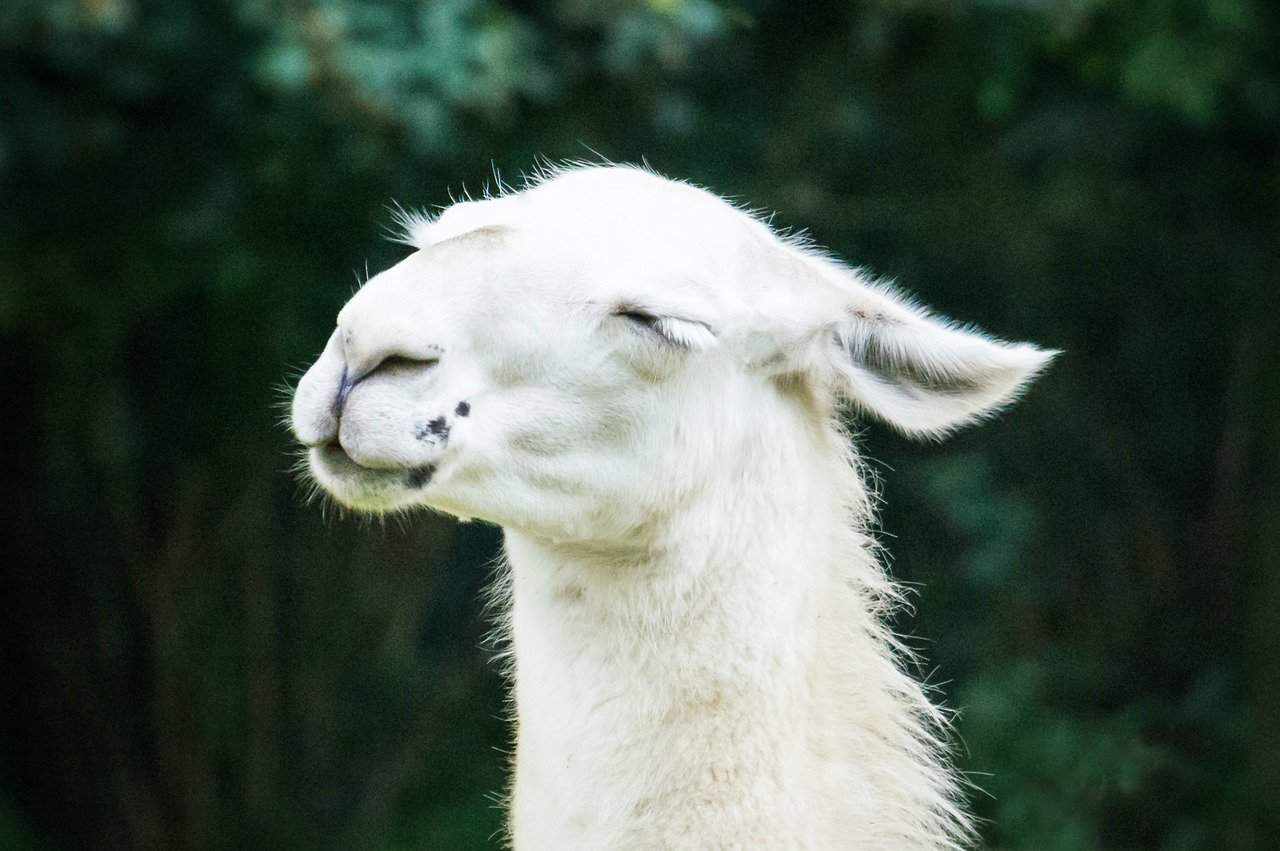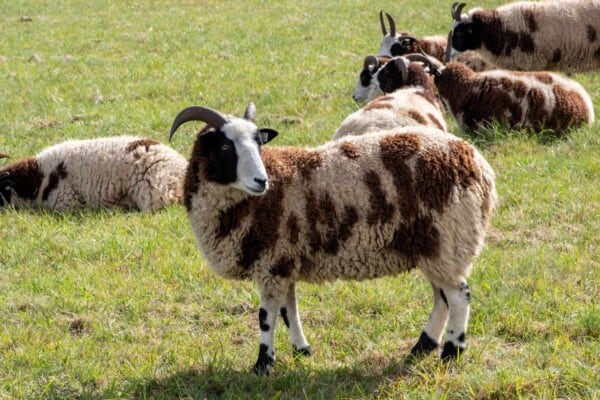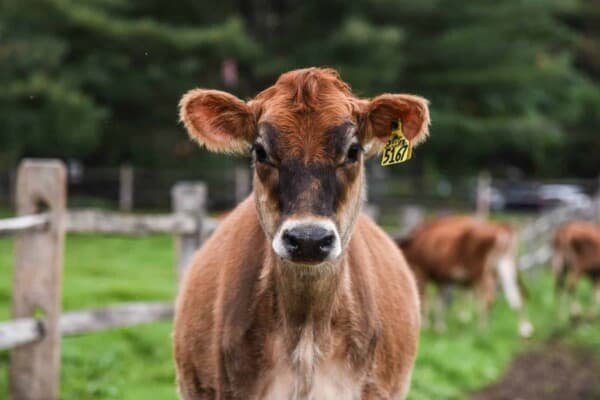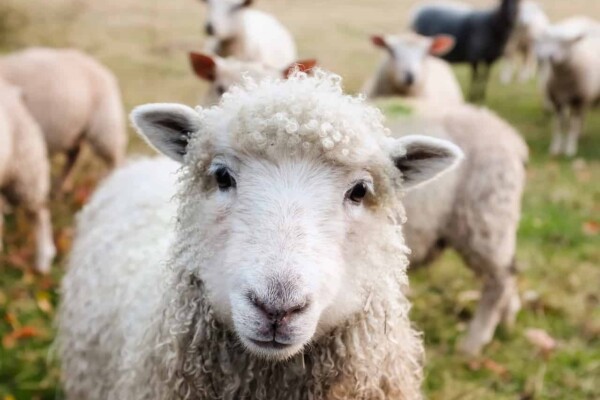The alpaca industry had its fair share of ups and downs over the years, but one thing that has remained a constant throughout all this time is the fact that it’s always been somewhat profitable to grow alpacas on your farm.
As such, more and more people have decided to start raising alpacas, to the point where we can even say that this market is a bit oversaturated today, due to just how many people are out there trying to sell you the exact same product.
While this is all fine and dandy though, we do need to keep in mind the fact that you still need to be fairly knowledgeable of the industry in order to properly raise your alpacas, without putting them at risk or the products that you’re trying to sell.
So, with that in mind, we decided to bring you a comprehensive guide on everything that you need to know about raising alpacas.
But before we actually get started with the alpaca guide, we should answer the question that pretty much everyone’s asking themselves right now:
What is the Difference Between Alpacas and Llamas?

Many people believe that llamas and alpacas are all the same, that they’re just slightly different creatures that don’t really have any distinguishing features whatsoever. These people are quite wrong though.
There are a ton of differences between the two, and while they are also very similar, it’s the same as saying that the black-footed cat is the exact same as your Maine Coon.
All jokes aside, these are the main differences between alpacas and llamas that you should keep in mind:
- Alpacas are fairly small and light, they only weigh in at around 100 to maybe 200 pounds at their heaviest, while llamas are known for being quite heavy by comparison, weighing in around 280 to almost 480 pounds in some cases.
- Alpacas are also relatively short, they only grow up to be around 3 feet tall or so, while the typical llama can grow as tall as 5 to 6 feet
- Because of their small size and friendly disposition, alpacas are usually kept as pets or for their fleece. They are also used for their meat in South America, although for the most part it’s their fleece that takes the cake. Llamas on the other hand are kept as guardian animals, pets and of course, they’re also kept around for their meat and fiber
Interestingly enough, while the two are quite similar to one another to say the least, they are also different enough when it comes to their DNA that they can interbreed.
This crossbreeding leads to an offspring known as the huarizo, and while we won’t really dive deep into what makes this breed special, let’s just say that it really blurs the lines between the two even further.
How Much Does an Alpaca Cost?

First things first, you need to understand that if you are even considering buying yourself an alpaca, you will need to shill out a lot more money because you will never be able to stop at just one.
This is largely due to the fact that alpacas are animals that thrive off when they’re part of a herd; they are always going to grow larger and be friendlier if they grow around other animals.
So, if you do want to get yourself an alpaca, always consider getting it another alpaca friend so that it has someone to socialize with and be around at all times.
With that being said, the typical lifespan of an alpaca is of around 15 to 20 years, depending on the food you gave it and of course, the conditions of living that you managed to provide it with.
You should also keep in mind that you can pick from two different breeds of alpaca when searching on the open market. The first of these is the huacaya. This is the breed that you can find at any local breeder, as this alpaca type comprises as much as 80 percent of the alpaca population in the US alone.

The second breed that you can get your hands on is a bit harder to come by, and it is known as the long-haired suri alpaca. Luckily, the prices don’t vary all that much between the two, so you won’t really need to worry that much about having to spend twice the amount because only one breed is in stock right now.
Instead, what varies between the two is the functionality of the breed. You can get yourself a small little pet for around $200 or so, but you can also end up with a nonbreeding male that has a fairly good quality fiber for around $500 to $1,000.
Keep in mind that the huacaya breed’s fiber is very similar to that of the sheep, and as such you will need to sheer it once per year or so.
Suri alpaca’s fleece is quite different to say the least as it resembles an Angora goat’s hair a lot more, and it is known for being a bit longer than that of the huacaya’s fiber.

Females will fetch you a bit of a higher price, costing you around $3,000 minimum, with some of them ranking as high as $30,000 or more.
Lastly, we have the show-worthy herd sires. These are the crème de la crop, they are the most beautiful of all of them, and as such they are also the most expensive ones to nab for yourself.
The typical specimen here will cost you as much as $60,000, and that’s just the entry price. Imagine how much more money it’ll cost you to actually take care of it and its high-quality fiber.
Taking Care of the Alpaca

Now that you do have a little furball on your hands, what do you need to know about actually taking care of it?
Well, for starters, you can rest assured knowing that alpacas are actually a lot hardier than they seem at first glance.
They are actually some of the most robust creatures your money could get you, and when it comes to the actual home and conditions that you need to provide them with, it’s all pretty basic stuff that you should expect by now.
For example, you only need to make sure that they are sheltered from bad weather, meaning that you can always go with a relatively small barn, although as long as the sun doesn’t hit them directly and they can’t be rained or snowed on, they’ll be more than okay with their life no matter what.
When it comes to their food, you will need to simply invest into hay and grass and that’s about it. Interestingly enough, despite being way larger than the typical Labrador retriever for example, the typical alpaca eats a lot less per month than it.
For the most part, you will only need about one acre of pasture for around three to five different alpacas, and as long as you supplement it with orchard grass hay you will see your alpacas grow in no time.
So, as long as you have about a ton of hay at the ready, you will be able to feed around three alpacas or so with that for about a year or so.
This in turn will cost you as little as $200 to maybe $400 or so. That’s quite affordable to say the least.
Fencing for the Alpacas

When it comes to the fencing for your future alpaca farm, you should know that a 5-foot-tall, small-weave, woven-mesh fence is going to do wonders here to keep your alpacas away from danger.
Most predators won’t be able to actually get to your alpacas this way, and not only that but you will also able to make sure that the alpacas can’t get their heads or legs stuck in between the fence’s openings either.
Alpacas are very curious creatures, they will immediately investigate their surroundings to make sure that they know everything that there is to know about where they are, and they won’t even attempt to keep themselves out of harm’s way, which is why you need to keep a close eye on them at all times.
As long as you do have multiple pastures you will be able to keep your alpacas well fed and happy without a problem though.
Just keep in mind that their stomachs are not as hardy as the rest of them, so you will need to shelter them away from any poisonous plants that would normally be harmless for most other herbivores out there.

Amongst the most annoying and yes, deadly plants that you will need to remove before letting your alpacas run wild are the following:
- Acorns
- Black walnuts
- Daffodils
- Foxglove
- Hemlock
- Elderberry
- Ginkgo tree
And that’s just scratching the top of the list. Just keep in mind that it won’t be easy, but as long as you got them as far away from these poisonous plants, you won’t ever have to worry about them getting sick.
How Many Colors Do Alpacas Come in?

This is actually quite a difficult question to answer, mainly because there are too many different hues to pick from out there. There are about 70 different hues that you could get your hands on, and while that may sound ridiculous, this is largely due to the fact that it is all random.
What isn’t random however is the quality of the fabric that they leave behind, that is something that is dictated by their breed, by their nutrition and of course, by the care that you give them.
Of course, there are more than a handful of people experts out there that will tell you that it is possible to actually influence the color of the offspring, but for the most part you will have to deal with whatever color comes out from the fray.
You can always check the toenails, the lips and the extremities of your alpaca, and that should give you a pretty good indication of what the alpaca will end up looking like, but for the most part you can’t actually change his or her color.
Mike Safley, a well renowned alpaca breeder from Oregon has claimed to have created his very own breeding color calculator, with which he claims to be able to tell what the color of the adult will be later on down the line.
How to Start a Business in the Alpaca Industry

In order to actually get started though you will need to follow through quite a lot and make sure that you are ready to take this step in the first place.
If you’re only looking for a quick buck you will might find it here, but you also need to keep in mind that alpacas live for almost 20 years each, so you could be stuck with them for a very long time no matter what.
As such you will need to make sure that you can see yourself still doing this 20 years from now at the very least, otherwise you shouldn’t take this step.
With that being said, here are the exact steps that you will need to follow through on when starting your own alpaca farm:
Confirm Whether It is Legal in Your Area

This may sound like a bit of a no-brainer but you will need to make sure that your state allows you to start an Alpaca farm in your area before you actually get started with everything else.
If it’s not legal then you can always move out and relocate in a state that actually allows you to start your business in it.
Create a Business Plan

First and foremost, you will need to actually draft a rough plan in order to make sure that you can pay for everything and not end up in debt to anyone. Here is also where you can write down everything that you plan on doing later on down the line.
For example, you can plan out how many baby alpacas you want to buy, raise and sell, and what your investment and profits will look like by the end of the first year. Here you can also minimize the total costs and maximize your profits.
Also make sure to select your business type here while also getting your final business plan fully developed.
Invest in the Property

Next up you will need to make sure that you arrange the necessary capital so you don’t end up with any shortcomings later on down the line.
This also includes you factoring in the space that you will need for your future alpaca farm. For example, for around five or so alpacas you will need about one acre of land, so if you plan on keeping about fifty alpacas at all times you will need at least 10 acres of land.
Building the farm should also be on your agenda right now, as you will need to factor in how much the barn will set you back or any other kind of shelter you want to invest into.
Apply for Registration

Now this is where things get really spicy, because this is where you will need to tread carefully so you don’t make any mistakes.
You will need to register your business so that the government actually recognizes your farm as a legal entity in the first place. This is important in case you will want to receive any loans down the line or if you want to take part in the tax benefits.
Let’s not forget about the fact that earning customers’ trust is also a must, and there’s no better way to do it than by showing everyone that you own a trustworthy business that pays its taxes on time.
Finishing Touches

Last but not least you will want to get the farm equipped with everything that it needs. This includes all of the equipment and the necessities such as the feeders, the food, the halter and whatnot.
At the same time, you will need to look into getting the help that you’ll need to take proper care of your alpacas.
If you do plan on owning fifty of them you will need a handful of people to make sure that they’re not mistreated, and trust us, you don’t want to base your whole business on a bunch of part-timers.
Last but not least, you will want to get your hands on the alpacas. You can do so either by placing an order online or by simply contacting your local farm owner and buying them from there.
We recommend using the latter option because this will also help you more down the line as you will befriend the local owners and showcase the fact that you’re willing to help and contribute to the community.
Conclusion

Taking care of alpacas has never been easier and that’s a fact. If you do want to make a quick profit or if you just want to own your very own fur baby you can’t go wrong with it.
Alpacas are very easy to take care of and very loving, and they are multi-purpose animals too so you can always end up with a profit by the end of the day.
If you opt for a show animal you will be a bit disappointed because they are quite expensive, but if you can handle the initial price tag we highly recommend it because show-ready alpacas are just downright stunning.












